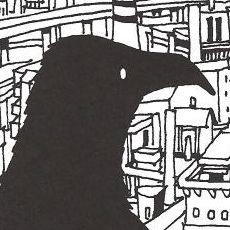Tag: horror
-
Berserk – 2 – Sparks fly as the wheels of fate spin
/
/ ReviewsRead More →: Berserk – 2 – Sparks fly as the wheels of fate spinEpisode two introduces us to the important characters that make up the “Band Of The Hawk” – in other words, the personalities that dominate the rest of Berserk. The dark-skinned Casca is an exceptionally talented swordsman who just so happens to be a woman. That she commands so much respect amongst her comrades suggests that…
-
Berserk – 1 – An introduction to obsession
/
/ ReviewsRead More →: Berserk – 1 – An introduction to obsessionI’m just going to come right out and say it — Berserk is my favourite anime of all time. I became an anime fan because of Naruto, but Berserk and its alluring quantities of bloody violence, epic action and tragic friendship immediately captured my heart and held onto it ever since. I still remember having…
-
D.Gray-man – 12 – Limitless sacrifice?
/
/ ReviewsRead More →: D.Gray-man – 12 – Limitless sacrifice?Like most of its Shonen Jump brethren, D.Gray-man is weakly balanced on a thin line between generic and fun. Just this evening I’ve caught up to episode 12 and feel torn by the somewhat superficial character development. Moody bishonen Kanda is a good example of how utterly archetypal some of these characters are – to…
-
Again the fate of the world is in the hands of 14 kids (Bokurano)
/
/ ReviewsRead More →: Again the fate of the world is in the hands of 14 kids (Bokurano)Its been a while readers, 7 days to be precise, and as we all know, 7 days on internet may as well be a lifetime. I won’t labor you with the details, but suffice to say that this gradual slow down in blogging is sadly down to cliche reasons; I have found a new job…
-
Reflecting on Kemonozume – Too cool for otaku
/
/ ReviewsRead More →: Reflecting on Kemonozume – Too cool for otakuIt’s fair to say that the creative staff “working on” (more like playing with) Kemonozume must have had so much fun, from flying heads and sexed up monkeys to a perverted old man shoving a pair of severed female arms down his skanky speedos – this is a show that clearly had no pretension of…
-
Kemonozume – 10 – Sex-starved monkeys and eating fish with giant detectives
/
/ ReviewsRead More →: Kemonozume – 10 – Sex-starved monkeys and eating fish with giant detectivesSince we’re now hitting the final couple of episodes, Kemonozume is building up to an action packed climax. The villain, or “big boss”, has turned out to be the fat Ohba – I liken his bizarre appearance to that of a clown, and deep down, we’re all scared of clowns – their smiley made-up faces…
-
Red Garden – 3 – Theatrical heart break
/
/ ReviewsRead More →: Red Garden – 3 – Theatrical heart breakEpisode 3 of Red Garden is the best yet; the viewer leaves this instalment drenched in suspense, mystery and blood, and all the while we’re slowly beginning to understand what’s happened to the girls – or rather, how they died! There are still big question marks hanging over why they were all together on *that*…
-
Kemonozume – 9 – Old habits die hard
/
/ ReviewsRead More →: Kemonozume – 9 – Old habits die hardStill on the run from the Kifuuken, we join the love birds Yuka and Toshihiko aimlessly wandering down vast and empty roads when they are offered a lift by an old married couple. Their journey (squeezed inside a white van) is a chance for them to reflect on their young relationship, inspired by the beautiful…
-
Kemonozume – 8 – Hard violence, hard sex, hard feelings
/
/ ReviewsRead More →: Kemonozume – 8 – Hard violence, hard sex, hard feelingsAt the beginning of this episode a boy student is excitedly kissing his innocent girlfriend for the first time. They hold each other in an emotional embrace, it is a pivotal moment in their lives, “Ah the day has finally come, Takako-Chan’s warm, soft, slippery thing is in my mouth…”. But the boy gets too…
-
Red Garden – 2 – Expensive shirts and werewolves
/
/ ReviewsRead More →: Red Garden – 2 – Expensive shirts and werewolvesI do love mysterious horror stories, especially when the viewer is as much at a loss as to what is going on as the characters themselves. The supernatural Red Garden is growing with this creeping intrigue, it’s bizarre and confusing and a lot of my interest is now centred on eventually finding answers. In some…
